2022.02.28 UP
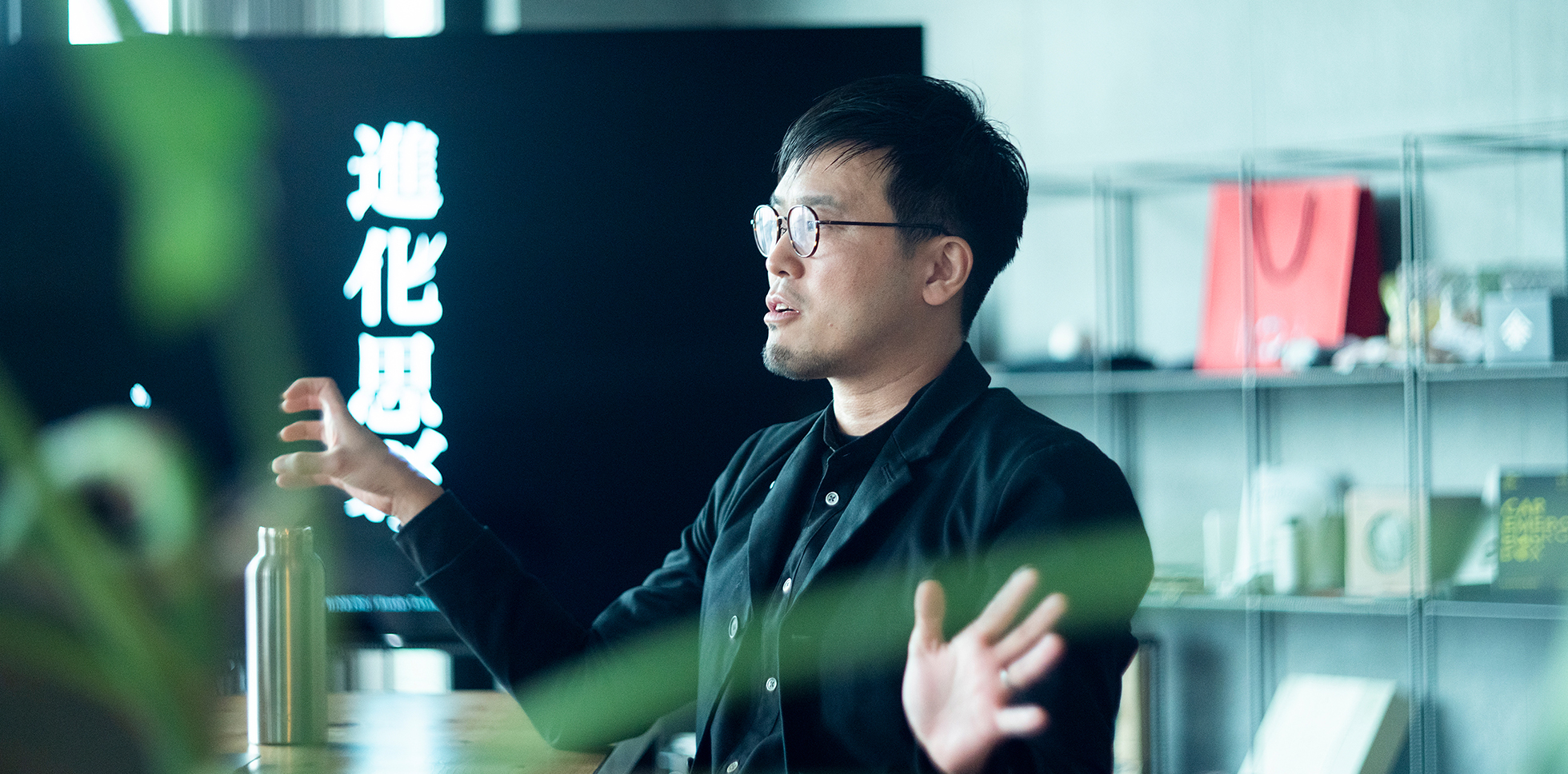
The global environment is facing a plastic waste problem. Plastic is one of the many materials harming the environment, from soil and ocean pollution to global warming. However, plastics are also a convenient material that is indispensable in modern society. As an alternative to environmentally unfriendly petroleum-derived polyethylene, Sojitz Pla-Net imports and sells plant-derived green polyethylene. What possibilities does this eco-friendly material have? We spoke with Eisuke Tachikawa, a design strategist and author of “Evolution Thinking,” a widely discussed book that takes a look at biological evolution and human creativity through the lens of analogical thinking. Tachikawa, who has experience using a variety of materials to tackle numerous problems with the power of design, shared with us his thoughts on the directions eco-friendly thinking and design should take moving forward.
Text_Shinri Kobayashi (Original Japanese)
Photograph_Masayuki Nakaya
Edit_Shota Kato (Original Japanese)
Biomass materials are gaining recognition as an ecologically friendly material. The total amount of plastics produced in the world in 2021 was around 400 million tons, while the production capacity of biomass plastics is about 2.2 million tons. This amount is expected to grow to 2.9 million tons in the 2025 fiscal year.* As global interest in sustainability grows, demand for biomass materials is also expanding rapidly. The current production capacity is unable to keep up with demand.
*European Bioplastics:UNEP ''Single-use plastics : A roadmap for sustainability'', European Bioplastics
The biomass material that Sojitz Pla-Net currently handles is called green polyethylene, which is produced by Braskem S.A., one of the largest chemical manufacturers in South America. In 2012, Sojitz Pla-Net acquired the rights to market green polyethylene in Asia.
Green polyethylene is a plant-derived resin that is mainly used as a raw material for plastic bags and containers. Since the main ingredient, sugar cane, absorbs CO2 as it grows, the total CO2 released when the material is incinerated can be regarded as zero (carbon neutral). Therefore, even if CO2 emissions from the manufacturing and transportation processes are included, CO2 emissions can be reduced by up to 70% compared to conventional petroleum-derived polyethylene.
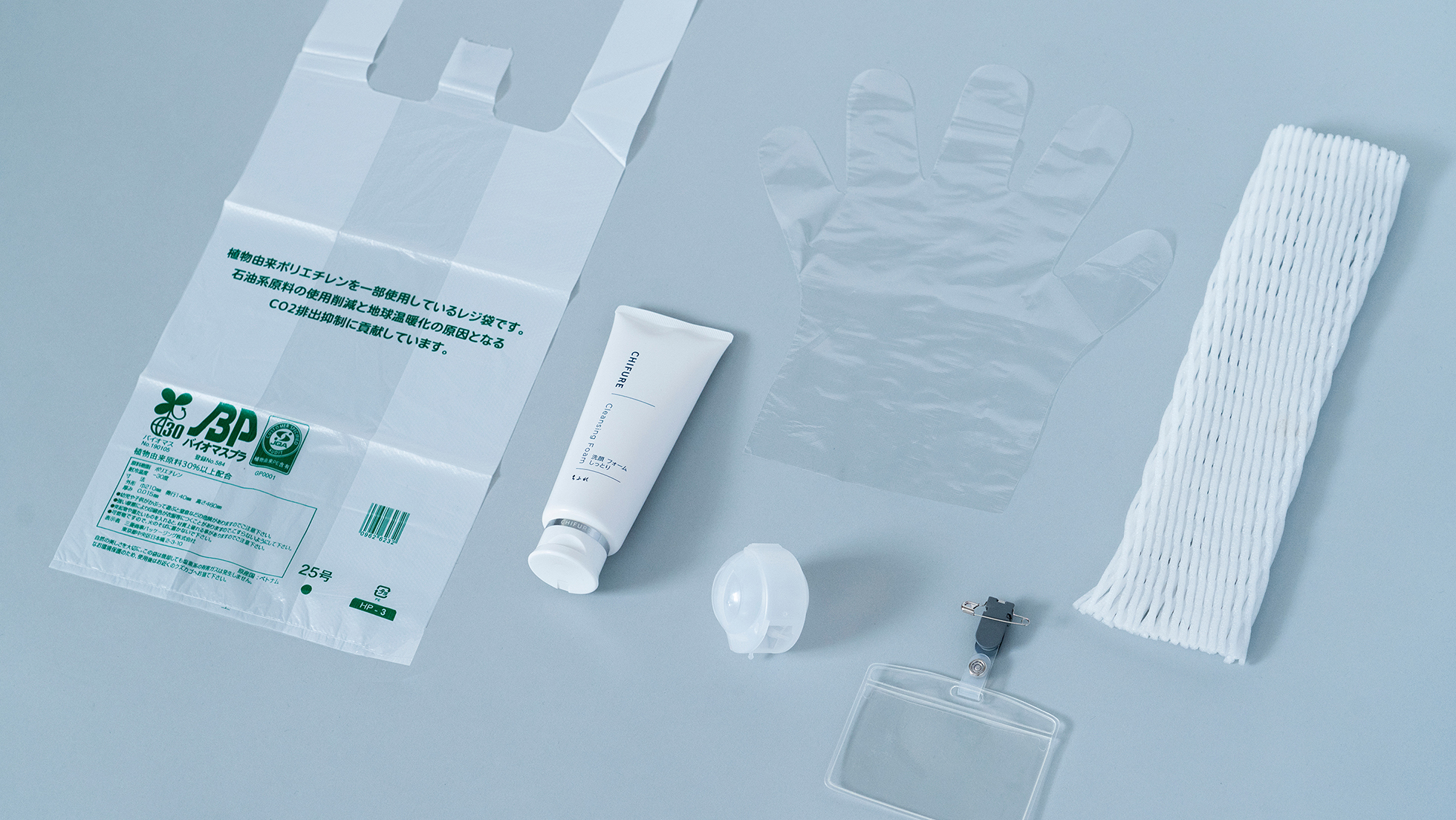
Commercialized green polyethylene-based products include padded fruit packaging, plastic gloves, plastic business card holders, foaming soap containers, inside laminated envelopes, and pill containers. In addition, green polyethylene is widely used as a general-purpose resin in bag products such as plastic bags, garbage bags, and shopping bags, as well as cushioning materials and plastic wrap.
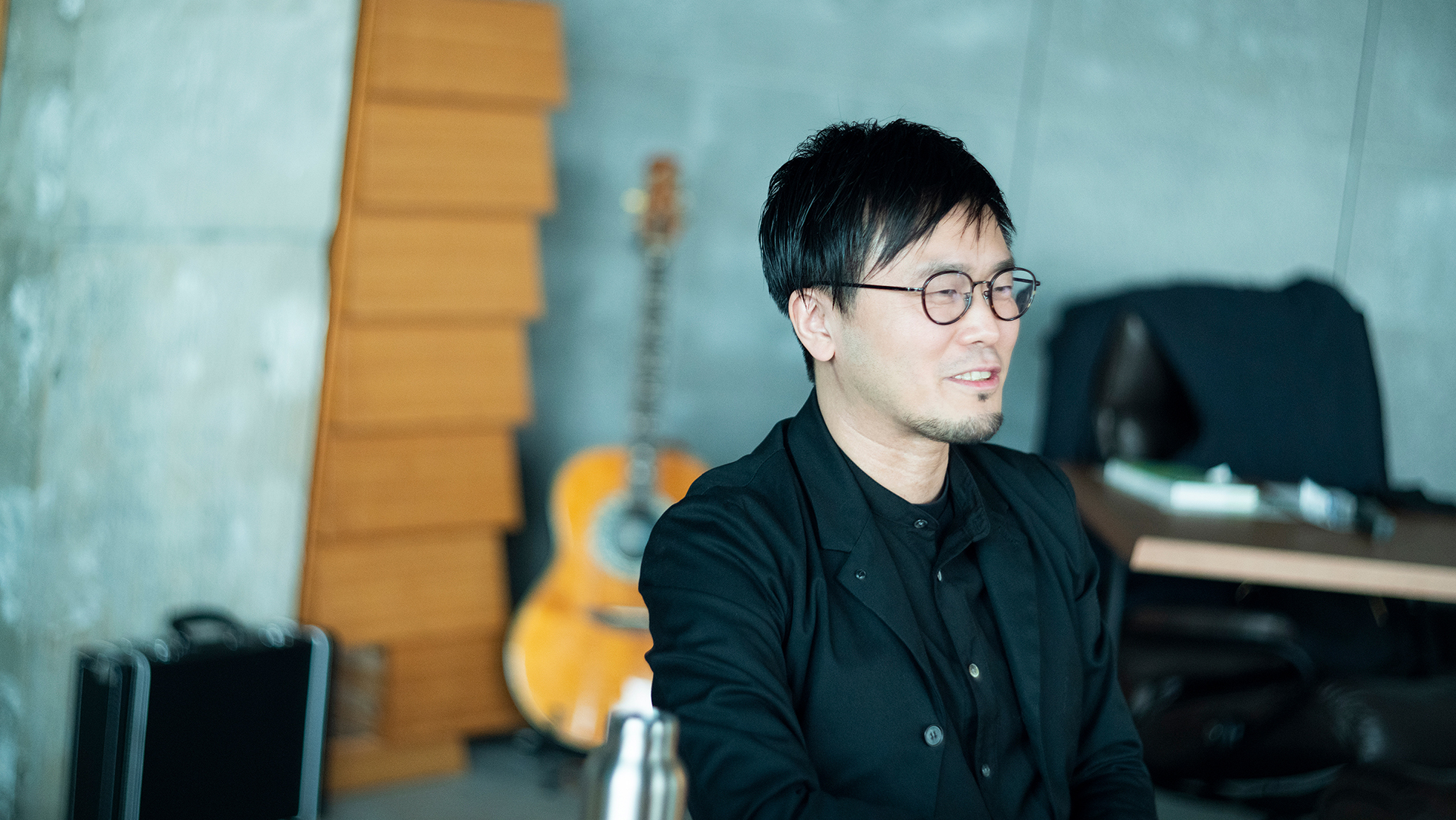
After establishing our understanding of green polyethylene, we spoke with design strategist Eisuke Tachikawa about how design should utilize this eco-friendly material.
Tachikawa first focused on environmental issues that are closely connected with plastics. The term “environmental issue” encompasses a broad range of fields, including CO2 emissions and microplastics. Many people might feel exasperated at the complexity of these intertwining issues. However, Tachikawa says that there are ways to solve these problems by observing each one individually, rather than taking a broad view. What kind of problems actually exist and what kind of design methods can be employed to offer solutions? Tachikawa shared some examples from his personal experience.
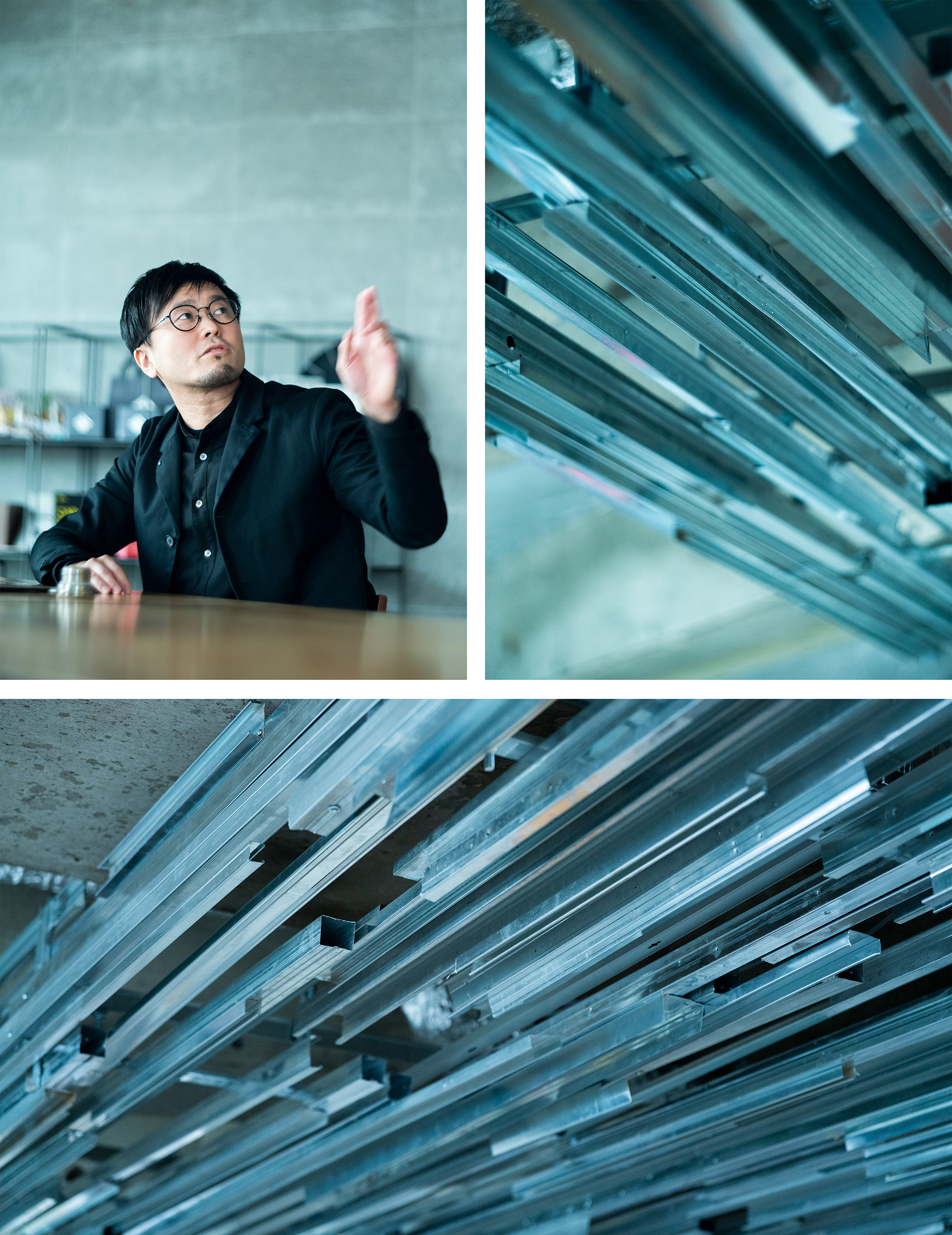
“The light-weight steel frame that forms the ceiling of my office is made from scrap materials taken from the previous structure of this room, which were intended to be thrown away. It's always best to reuse waste materials as close as possible to where they originated. We are also currently working on a project to turn surplus plastic lacquerware from Sabae City in Fukui Prefecture into clocks. This project involves repainting tens of thousands of plastic trays and the lids of stacked food boxes that are lying in warehouses and turning them into clocks. In both cases, upcycling is done through the power of alteration and design to reinterpret existing values—in other words, by using our resourcefulness. For example, green polyethylene is an effective option for decarbonization, but it is difficult to recycle into new materials because the current separation of discarded plastics is quite disorganized. If materials derived from green polyethylene can be recycled or upcycled instead of being thrown away after use, society will be able to more effectively coexist with plastics.”
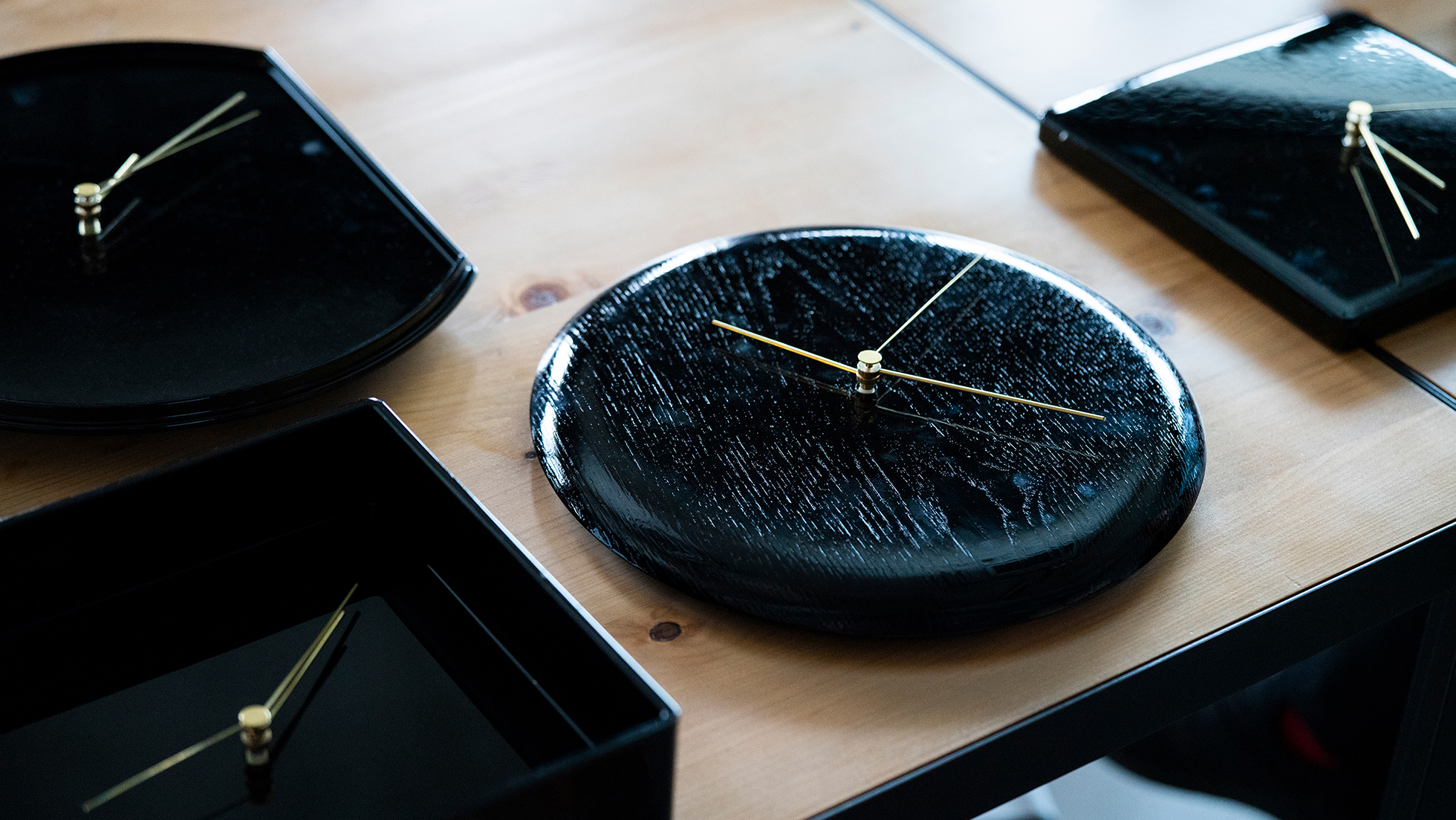
The upcycling method of giving a new role to something that previously had zero value requires imagination and design skills. When done well, it is a brilliant solution to create value without producing waste. However, it is a difficult task to come up with an idea that will make people cheer. This is where another design perspective comes in, Tachikawa explained.
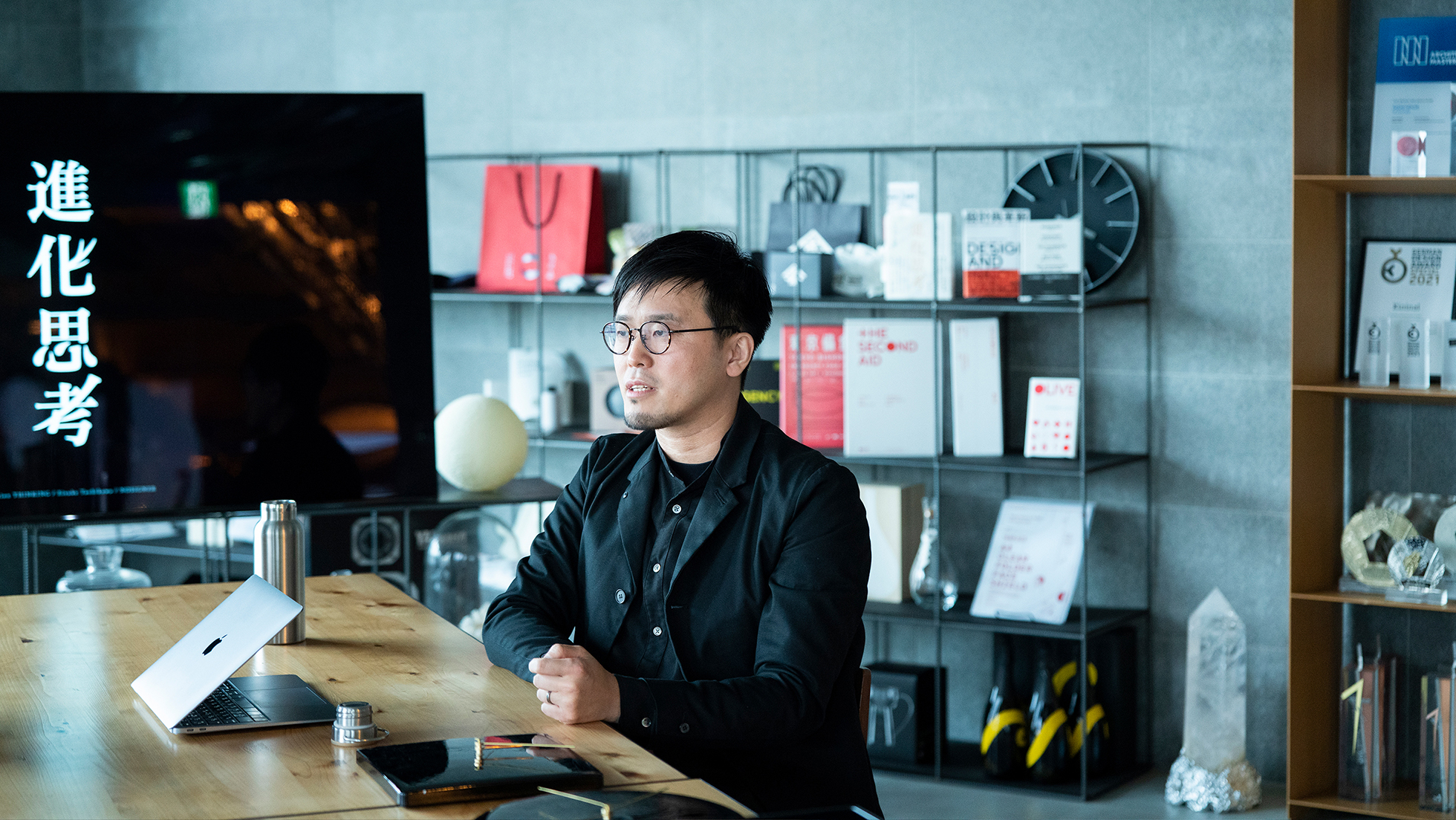
Tachikawa’s perspective on design is not limited products; it also extends into the realm of communication design.
“It is important to replace polyethylene with green polyethylene, but another important issue is how to recycle it. To recycle properly, we need traceability of plastics. The problem is that all plastics, such as polyethylene and polyvinyl chloride are all considered to be the same type of plastic. Users are not aware of the differences and are unable to distinguish them. This means that we cannot track when, where, and by whom a product was made, which poses a problem in terms of traceability. For example, if a product is clearly labeled as polyethylene, it can easily be recycled into pellets and reused. If we know what a material is and where it is made, we can reuse it. I think that this traceability can be influenced by effective communication design.”
How can design help make plastic traceable? And what kind of effects can it produce? As an example, Tachikawa brought up the recycling symbol.
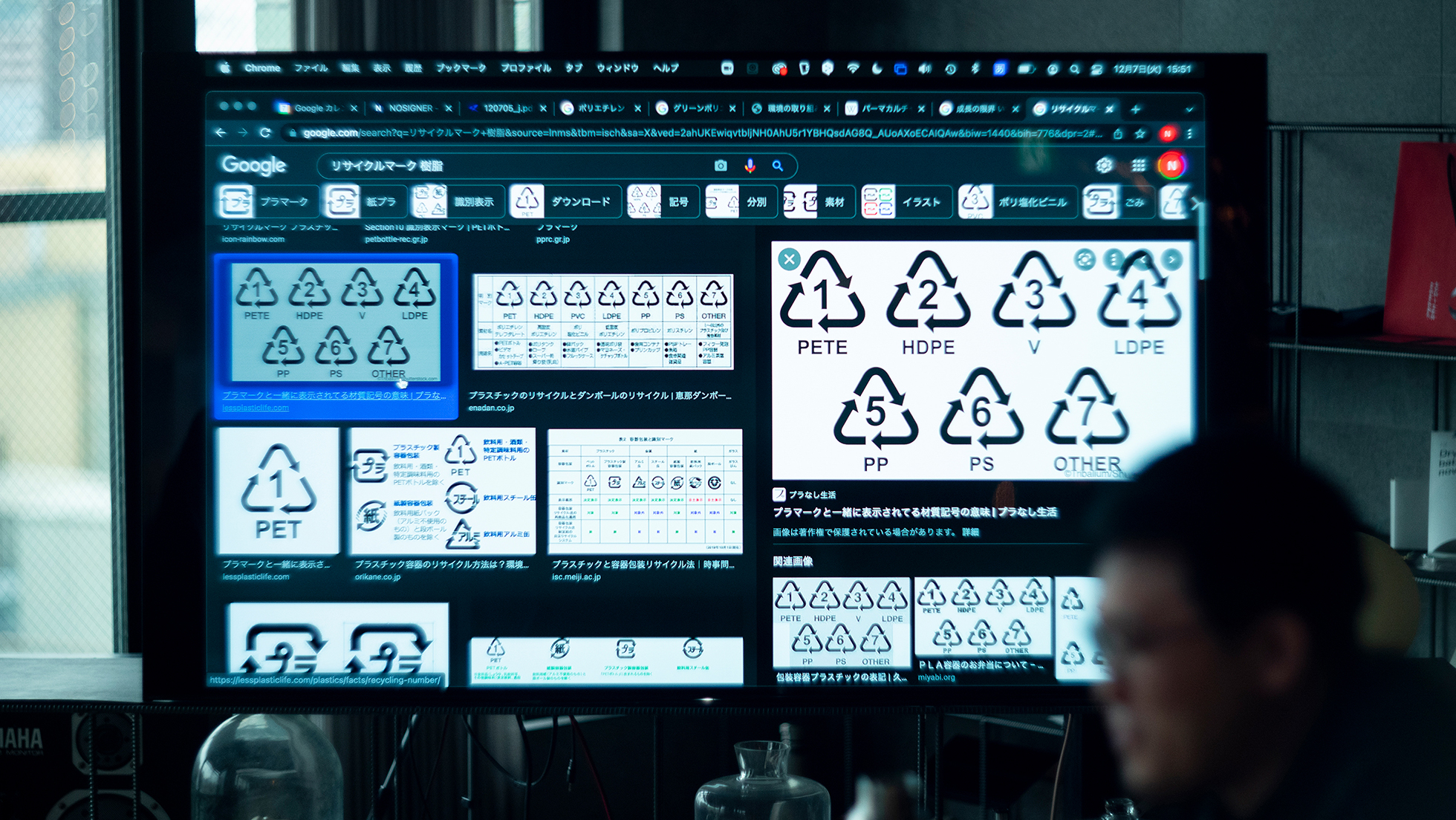
In the current material identification mark system in Japan, the material is indicated by a number. For example, “1” indicates polyethylene terephthalate (PET) and “2” is for high-density polyethylene (HDPE). However, most consumers don’t know the difference between what those numbers mean. So how can design tackle this issue? Tachikawa explained using communication design examples.
“As I mentioned earlier, Fukui Prefecture is famous for its lacquerware, and we had a similar problem there. Even if a product looks like lacquerware, it is difficult to tell at first glance whether it is coated with synthetic or natural lacquer, and whether the item is made of plastic or wood. So, we added a pictogram on the product tag so that the material is easily recognizable. To our surprise, sales increased by 20%. It makes sense, doesn’t it? People looking for lacquerware won’t buy something if they’re not sure if an item is the real thing or not. At the same time, plastic items have the advantage that they can be washed in the dishwasher.”
By adding traceability information to the markings on plastic materials, we can deepen consumers’ understanding and allow them to choose the appropriate material, as we did in the lacquerware case.”
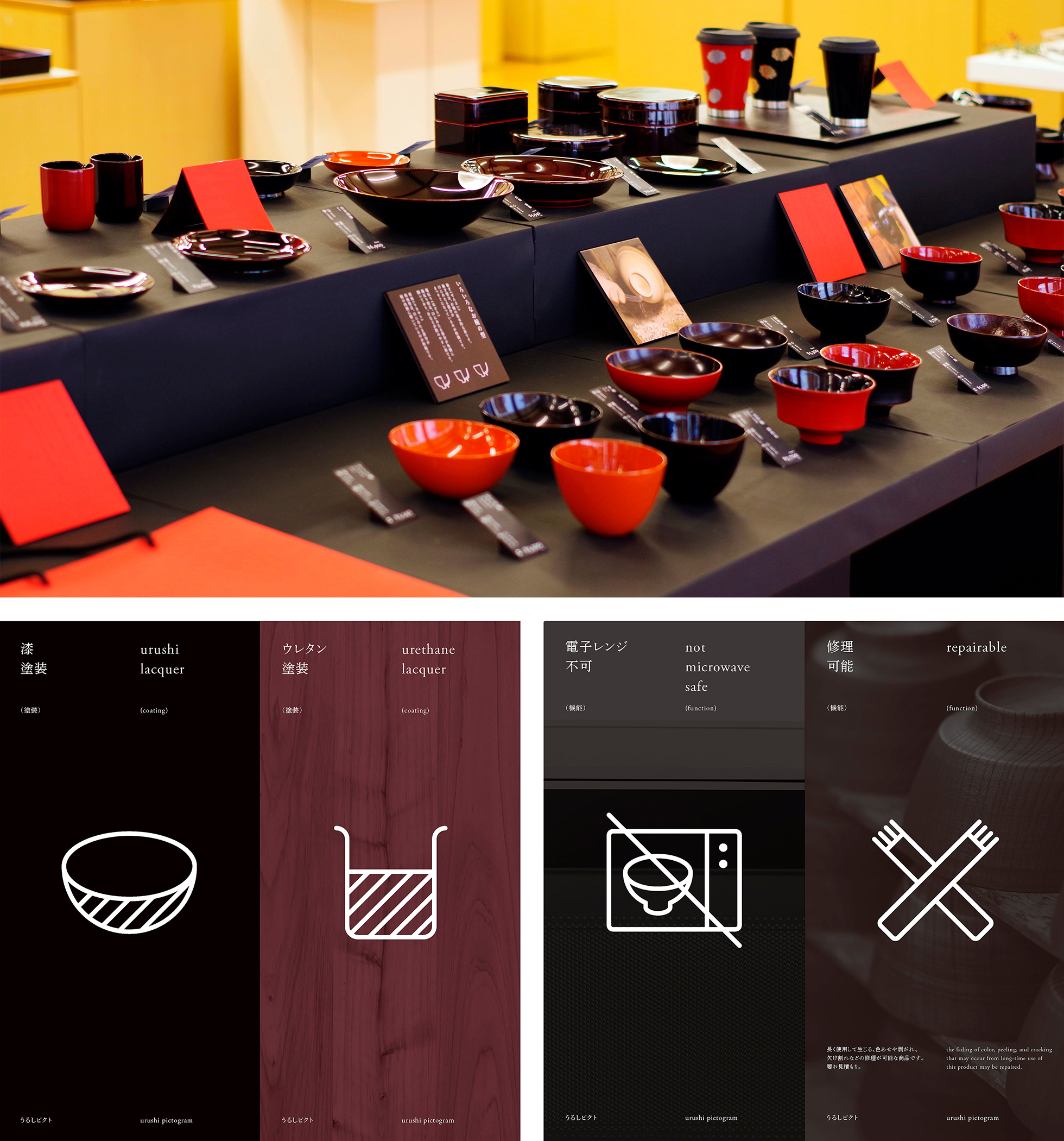
What can a company that develops a range of projects related to the environment, including green polyethylene, do? Tachikawa says that the company should emphasize that it is looking at the big picture in its messaging.
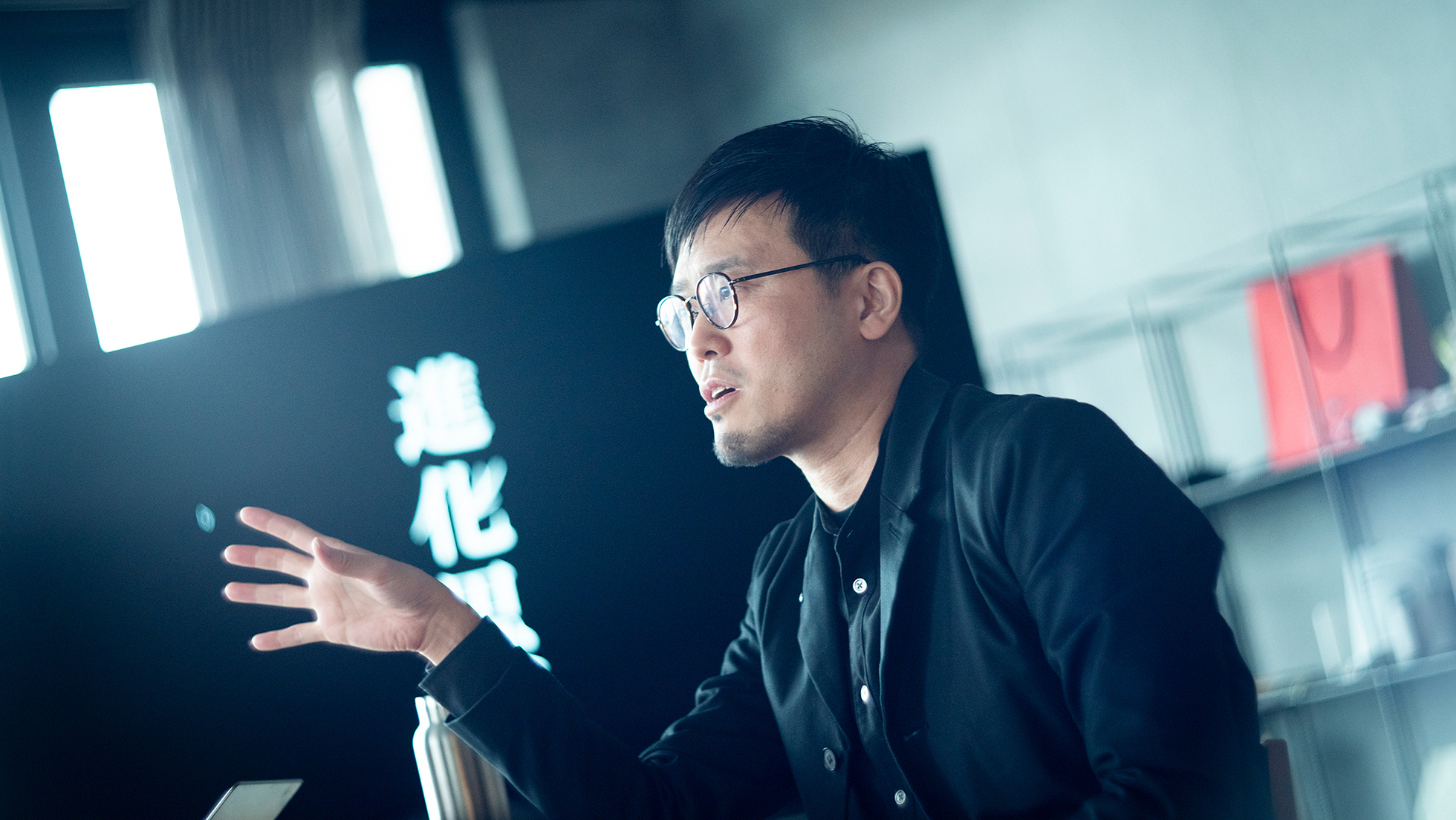
“A company must propose an entire ecosystem that links each stage of plastic together. For instance, they might use biomass plastics or recycled plastics in manufacturing—which is where the plastics problem starts—and create systems to recover plastics in a way that ensures traceability and recycle them to pellet form. A general trading company such as Sojitz can do all of this at once.”
For example, traceability makes it possible to tell whether a certain plastic is petroleum-derived polyethylene or green polyethylene. Only when we—the consumers—are able to distinguish which is which, can we properly recycle plastics. This is when using green polyethylene will become meaningful, Tachikawa pointed out.
“I’m interested in designing the overall structure of the ecosystem. For example, suppose we could visualize the level at which green polyethylene could contribute to solving environmental problems and how other material options might contribute. It would be great if a variety of options could be shown, and if consumers could be aware of which material is most suitable for each location. Only then will users be able to grasp that the plastic they are using is beneficial for the environment. This will bring to light the invisible value of green polyethylene, which can also be used for branding.”
The different types of eco-plastics, their contributions to the environment, and even how they are used and processed after use. As society is becoming more and more aware of the obvious need for ecologically friendly plastics, what we need to do is learn more about plastic itself, both the good and the bad. Gaining even a small awareness of plastics will open up a wide range of new possibilities.
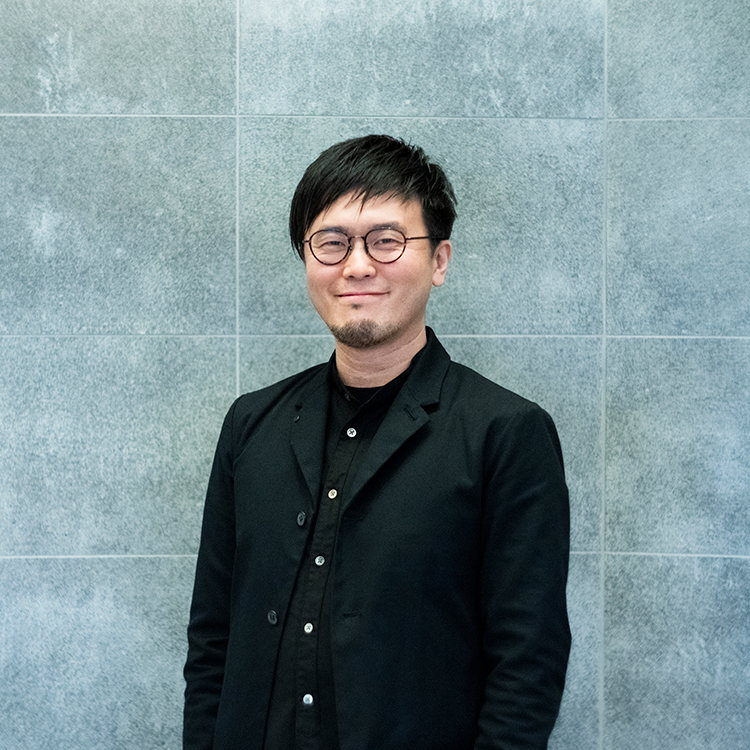
Eisuke Tachikawa
CEO of Nosigner / President of Japan Industrial Design Association / Evolution Thinking Inventor / Design Strategist / Keio University Special Guest Associate Professor
As a design strategist, Tachikawa is creating a brighter future through projects involving initiatives such as SDGs, utilizing advanced design expression in products, graphics, and architecture. He has won more than 100 design awards in Japan and abroad and has served on the jury of the Good Design Award and other awards.
Tachikawa’s book "Evolution Thinking" (Ama no Kaze, 2021) was awarded the Shichihei Yamamoto Prize. The book presents systematic methodology for learning the essence of creativity from nature, and it is being used to develop creative human resources in industry, academia, and government.
His major projects include the Tokyo Metropolitan Government’s disaster preparedness materials, PANDAID, and the basic concept for the Japanese Pavilion at Expo 2025 Osaka-Kansai. His other publications include “Design and Innovation” (PIE International, 2016).
Nosigner’s website:
https://nosigner.com/